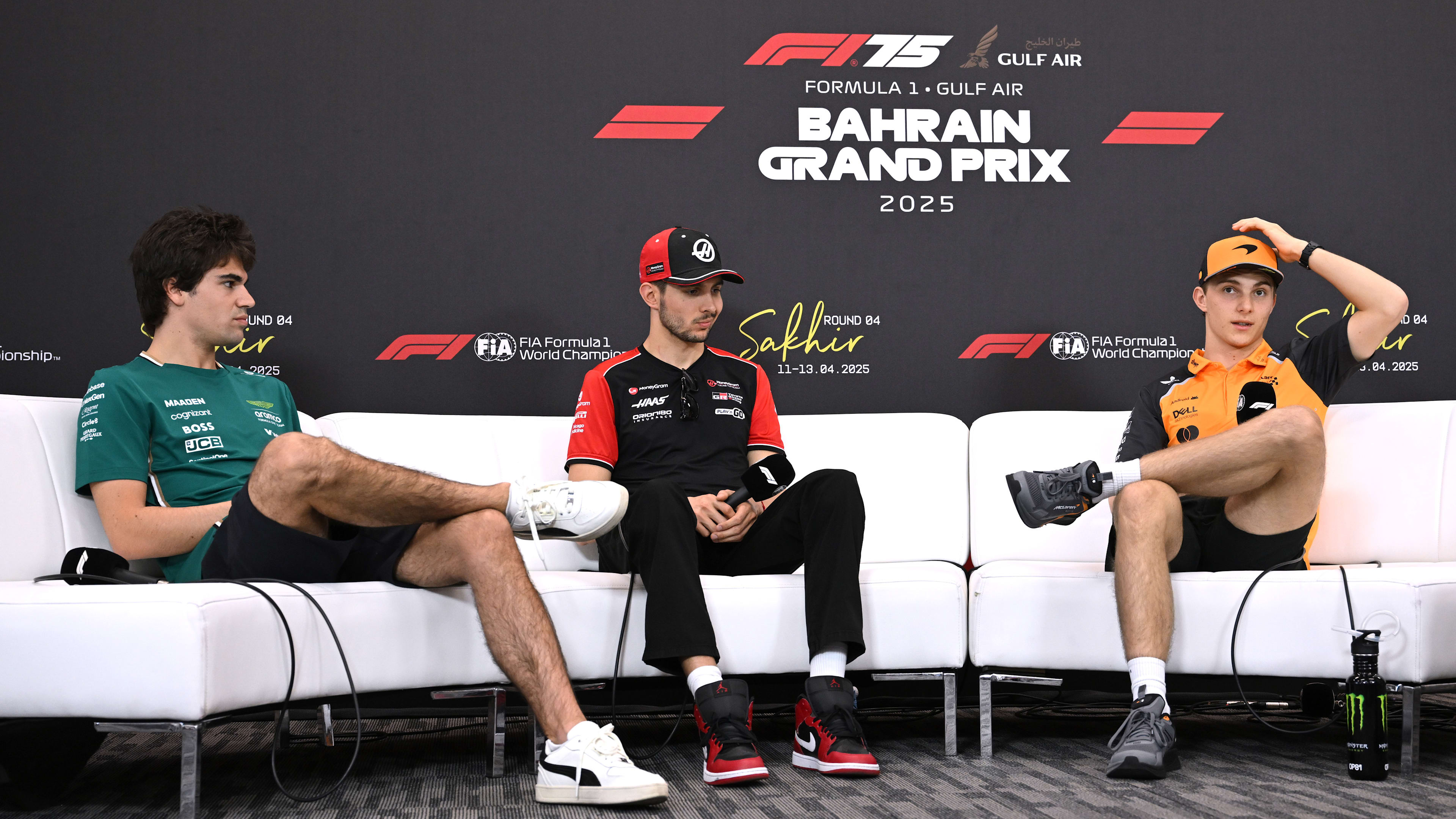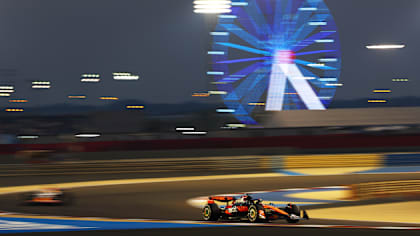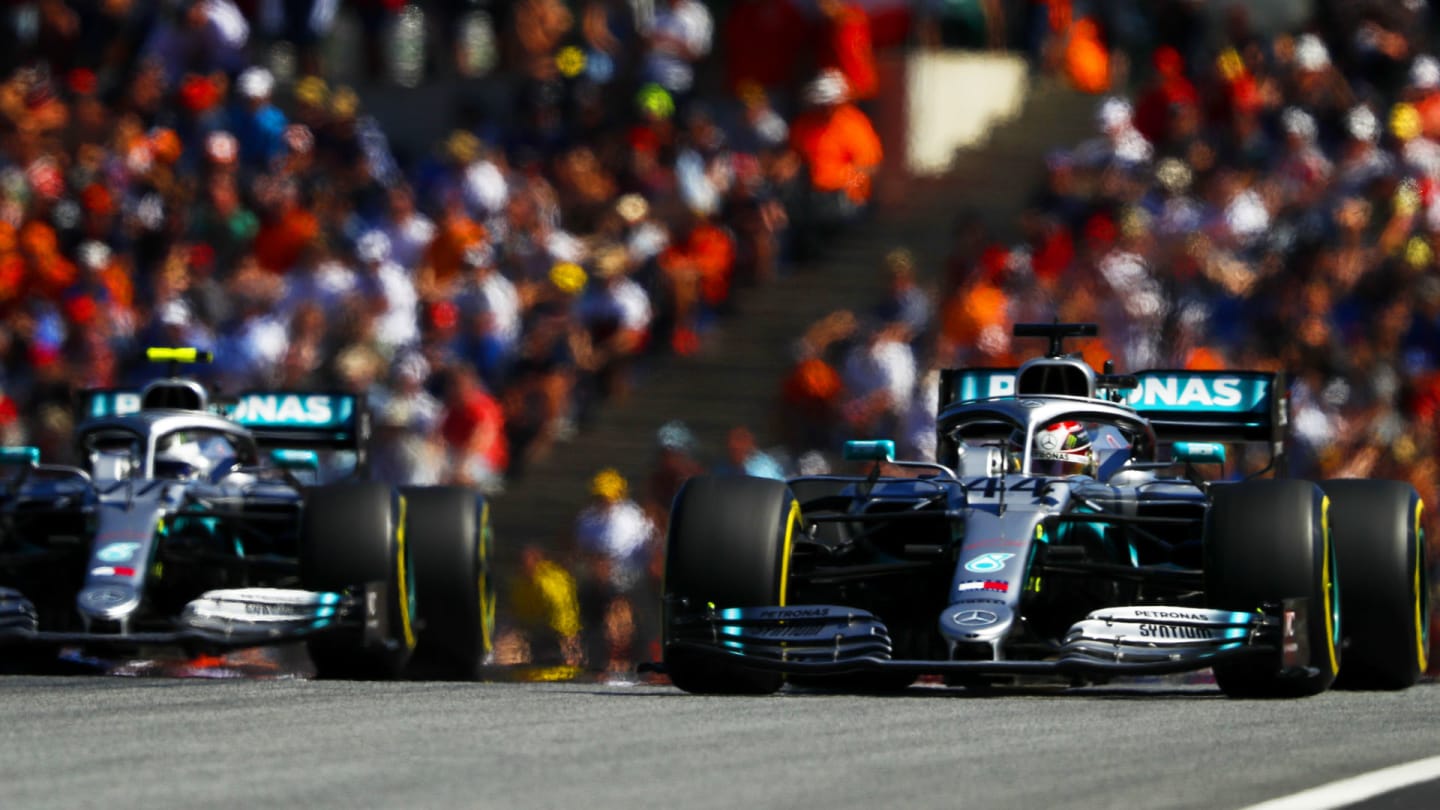
Technical
TECH TUESDAY: How cooling demands neutralised Mercedes’ threat in Austria

Share

In Austria not only did Mercedes fail to win a race for the first time this season, but the victory was fought out strictly between two other teams – Red Bull and Ferrari.
Although there were improvements to both those cars at this race, these are unlikely to be the primary reasons for the competitive shake-up. It was much more a case of the very specific circumstances of track and conditions forcing Mercedes to run in very compromised form. What were those circumstances? They were almost entirely to do with the combination of heat and altitude.
The Red Bull Ring, situated in the Styrian foothills, is located at 660 metres above sea level. The lower oxygen content of the air at this altitude gives it less cooling power anyway. But when the ambient temperature of that air is 34-36 deg C as during the weekend, then the overall effect is of course only intensified.
Couple that with a track layout that features relatively short straights and engines that are under regular sustained acceleration load without much straightline running to cool them, and it becomes clear just what a challenge the Red Bull Ring in the middle of a heatwave will be.
This posed particular problems for Mercedes because of the way their mechanical components are packaged within the bodywork. As a generality, any cooling area costs downforce and is considered very much a necessary evil by aerodynamicists. When the cars are being conceived, the teams make a calculation based on the global cooling demands for every circuit on the calendar.
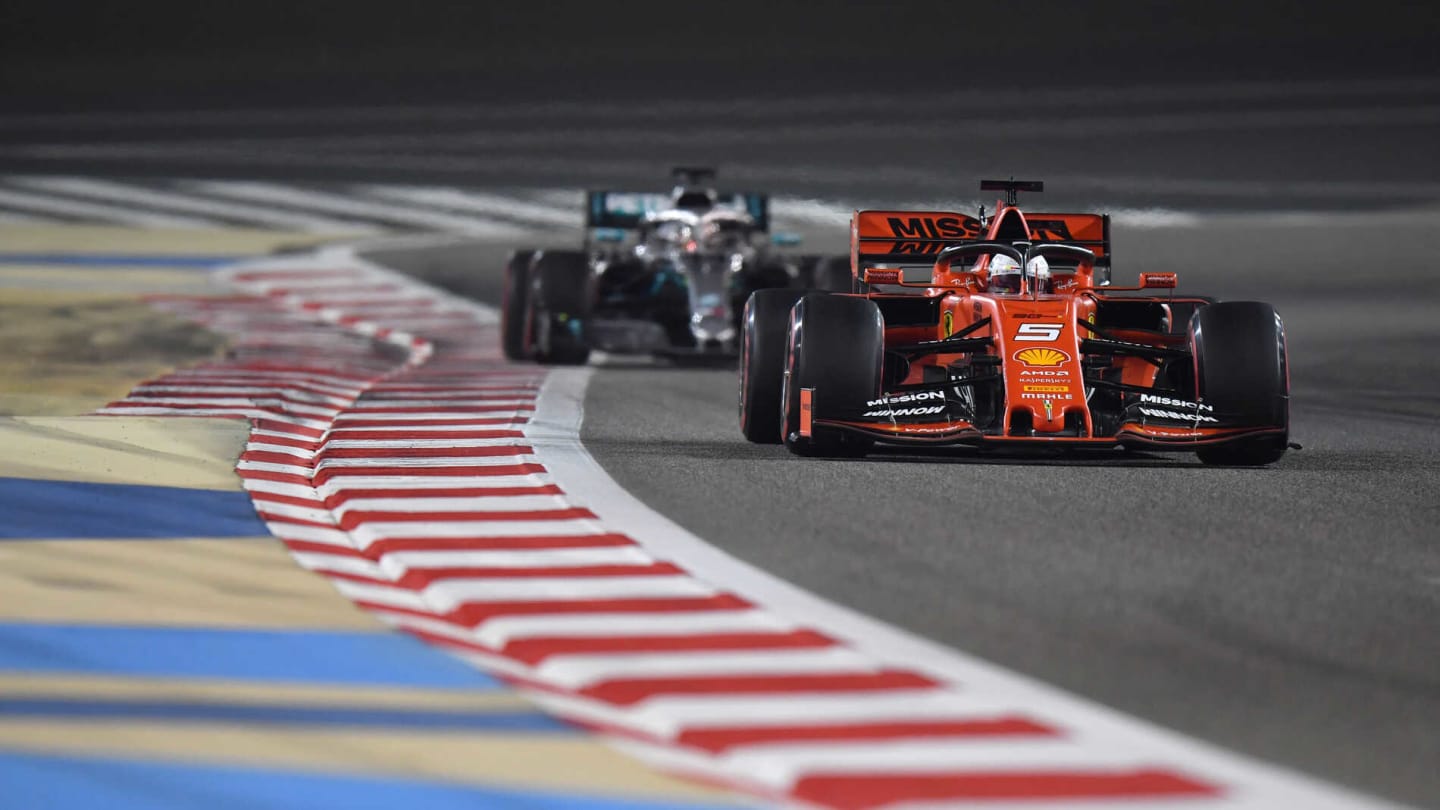
Mercedes have struggled at cooling-critical tracks this year, like Bahrain
Bahrain, Austria, Hungary and Mexico are always the most demanding so the teams must decide how much to incorporate those demands into the standard bodywork of the car – and how much to compromise the aero at those tracks in order to have better aero at the remaining tracks where the cooling is less critical. If the car can be made more aerodynamically effective at 17 tracks by accepting that it will be badly compromised at four of them, it may well be worth doing.
The calculation will inevitably be much more sophisticated than that, and in simulation will measure exactly how much performance will be affected at each track for each of the two alternative approaches.
It can also be true that a team expecting to be running in the clean air at the front will make more cooling compromises than one certain to be running in traffic for much of its life. It seems in the configuration of the W10, Mercedes have been particularly aggressive in optimising their aero around the majority of the tracks where cooling is not as demanding as in somewhere like Austria. Which means that in these hot tracks, the bodywork will have to be opened out more than on those cars which have not been so extreme.
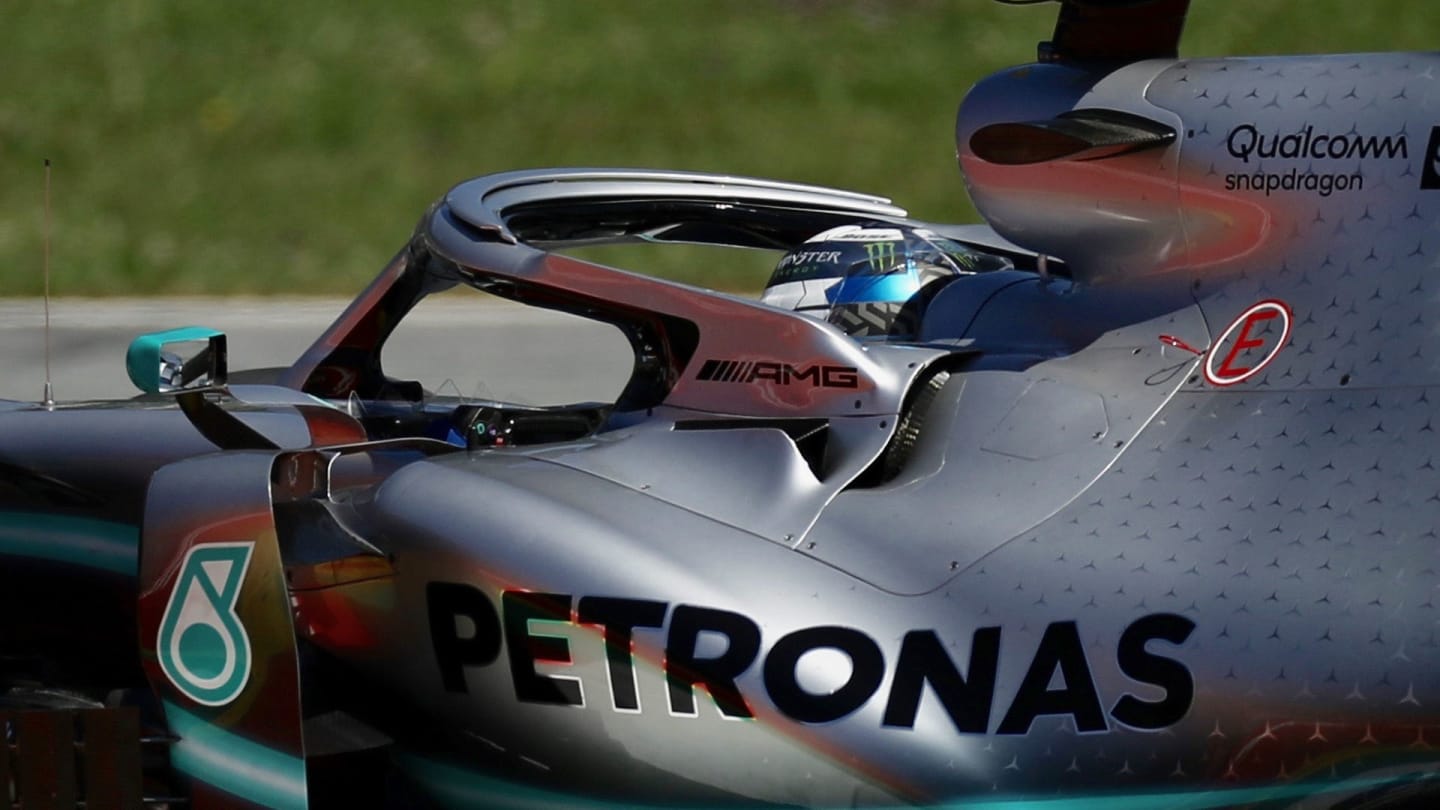
Mercedes opened up the bodywork behind the cockpit
Cooling the oil and water radiators requires an inlet for the cooling air (housed at the leading edge of the sidepod) and various outlets. The outlets are mainly at the back of the car, typically either side of the exhaust beneath the top suspension, at the base of the engine cover. Additional outlets can be opened up on the cockpit sides above the radiators. The bigger the outlets, the faster the air is drawn through the inlets and so the greater the cooling effect.
But the bigger the outlets, the more aerodynamically disruptive they are. Mercedes have clearly squeezed in their mechanical components around the back of the car super-tight in order to maximise aero performance at normal tracks. But that meant they were forced to open up the outlets more than either Ferrari or Red Bull in Austria. A comparison of the extra outlet area above the line of the rear suspension between the three cars tells that story quite well.
That extra outlet area disturbs the airflow in a very sensitive region as it makes its way down from the flanks of the car to the area between the inner face of the rear tyre and the outside walls of the diffuser. Furthermore, because that outlet air is hot and less dense, it is not as effective as creating the pressure differences that help induce downforce.
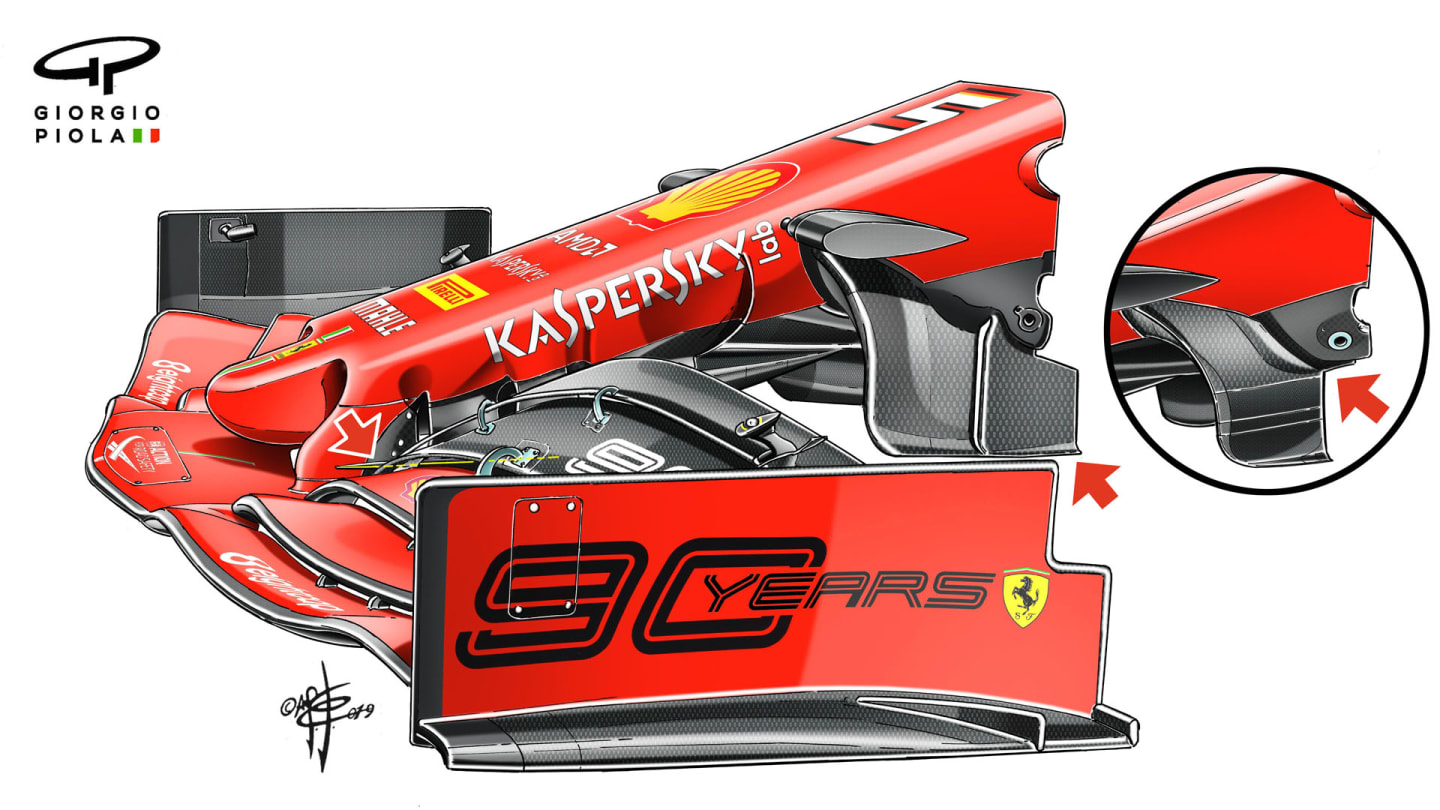
Ferrari added a horizontal splitter down the side of the nose and an enhanced series of vanes at the back of it in Austria
But even with those more extreme cooling levels, the Mercedes drivers were having to lift and coast more than the others so as to minimise the load on the engine. The higher engines modes that would normally be used tactically at key points in the race were not available either.
By contrast, Verstappen was given permission to run Honda’s most aggressive engine mode for an extended period of time and neither he nor the Ferrari drivers were having to do much lift and coasting into the corners. Those cars could therefore be raced much more aggressively than the Mercedes.
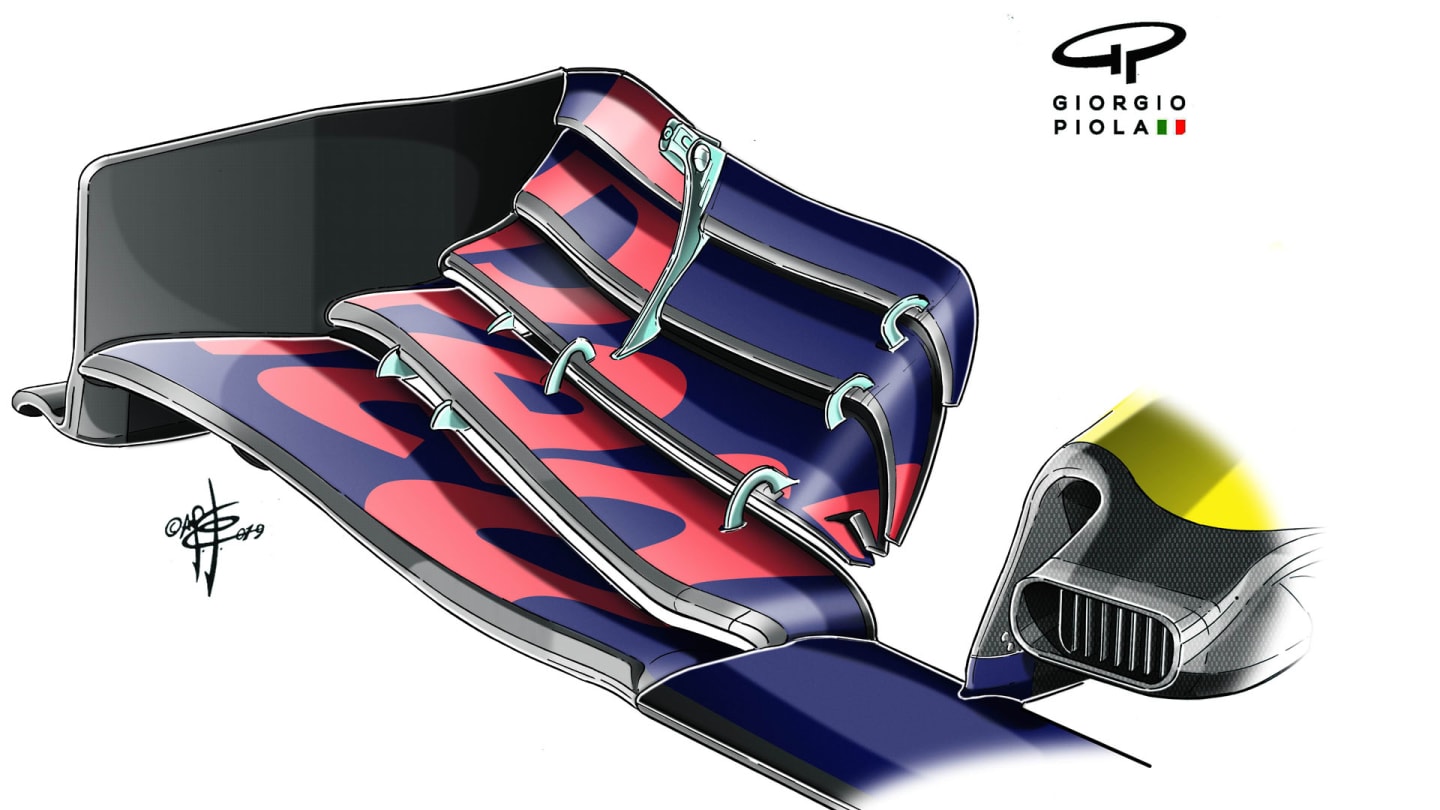
Red Bull brought a new nose and front wing endplate to their home race
Both the Ferrari and Red Bull did carry some development aero modifications, however. The Red Bull had a new nose and wing endplate. The Ferrari had a horizontal splitter down the side of the nose and an enhanced series of vanes at the back of the nose where it meets with the chassis to more clearly define the airflow to the barge boards. But these will have been of second-order significance to the differences in chosen cooling levels. Mercedes’ competition can at least look forward with some hope to Hungary and Mexico.
Click here for more in-depth technical analysis from Mark Hughes and Giorgio Piola
YOU MIGHT ALSO LIKE
News ‘It’s like a science room’ – Tsunoda shares the challenge of getting to grips with Red Bull’s RB21
Podcast F1 EXPLAINS: Ask an F1 Team Principal with Williams boss James Vowles
Report FP2: Piastri leads Norris as McLaren dominate second practice in Bahrain
News Leclerc ponders ‘annoying’ deficit to McLaren in Bahrain despite Ferrari updates that are ‘definitely working’
